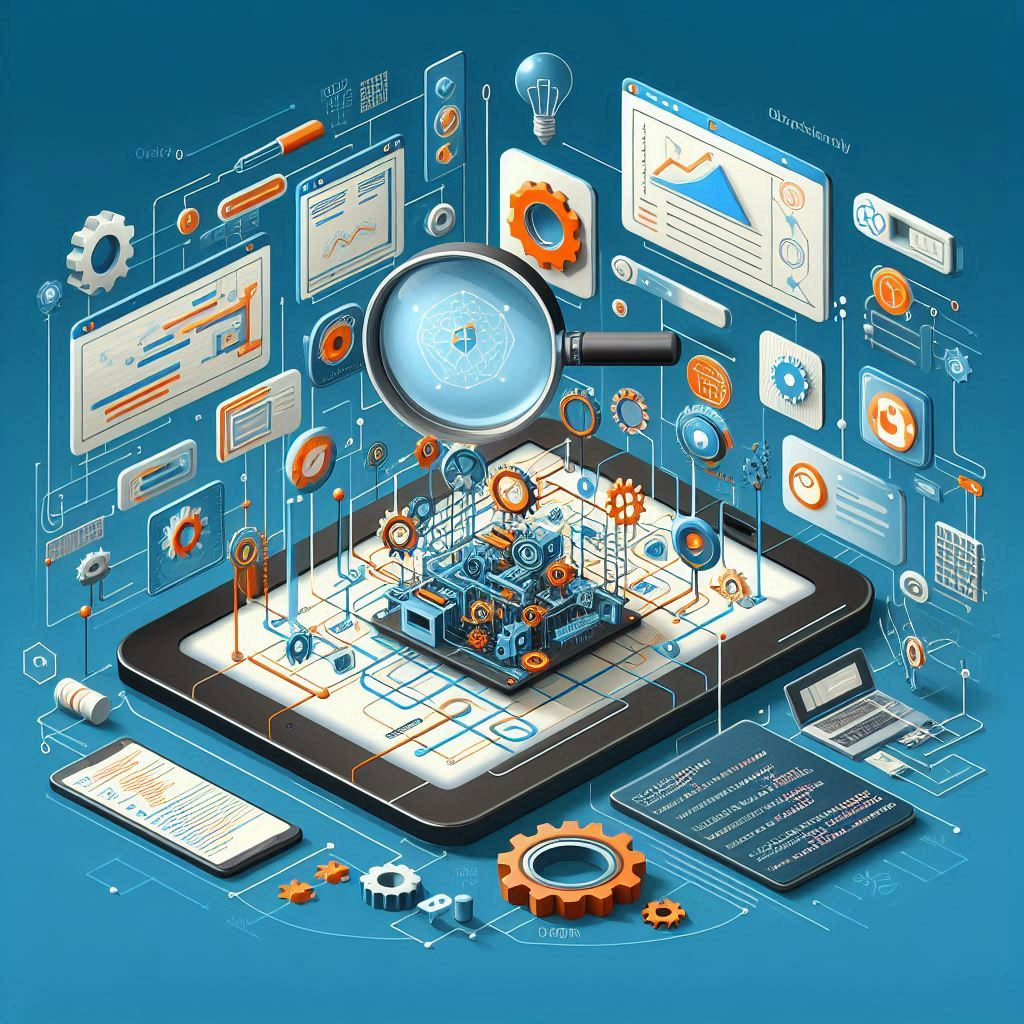Digital Twins and Model-Based Methodologies in System Design
Introduction
In the realm of system design, digital twins and model-based methodologies have emerged as transformative approaches that enhance efficiency, accuracy, and reliability. Digital twins—virtual representations of physical systems—allow real-time monitoring, analysis, and simulation. When combined with model-based methodologies, they provide a comprehensive framework for designing, testing, and optimizing complex systems before physical implementation.
Industries such as automotive, aerospace, and software engineering use digital twins to reduce errors, save costs, and speed up development. This blog explores digital twins in model-based design, their benefits, uses, and future potential.
1. Understanding Digital Twins and Model-Based Methodologies
Model-based methods use models to represent how a system works. Digital twins take this further by using real-time data to improve accuracy. Together, they create a powerful design and testing approach.
Key Components of Digital Twins and Model-Based Methodologies:
1.1 Modeling Languages: These are formal languages used to create models. Examples include Unified Modeling Language (UML), Systems Modeling Language (SysML), and domain-specific languages tailored for specific applications.
1.2 Model Types: Models can be classified into various types based on their purpose, such as functional models, structural models, behavioral models, and performance models. Each type serves a distinct role in the design process.
1.3 Modeling Tools: Software tools facilitate the creation, manipulation, and analysis of models. These tools often provide graphical interfaces, simulation capabilities, and integration with other engineering tools.
2. Advantages of Digital Twins and Model-Based Methodologies
The adoption of model-based methodologies in system design offers several advantages:
2.1 Enhanced Communication
By providing a digital twin of a system, stakeholders gain a shared understanding of design requirements, reducing misunderstandings and misalignments.
2.2 Early Validation and Predictive Maintenance
Simulation and real-time monitoring of digital twins allow early identification of design flaws. As a result, companies can prevent costly errors and enhance system reliability.
2.3 Improved Design Quality and Performance Optimization
Model-based methodologies enable comprehensive analysis of system performance, including functional, structural, and behavioral aspects. This thorough examination leads to higher-quality designs that meet specified requirements and standards.
2.4 Reusability, Scalability, and Lifecycle Management
Models can be reused across different projects, promoting consistency and reducing development time. Additionally, model-based methodologies can scale to accommodate complex systems, making them suitable for various industries, including aerospace, automotive, and software engineering.
3. Key Concepts in Digital Twins and Model-Based Methodologies
3.1 Abstraction, Decomposition, and Real-Time Data Integration
Digital twins go beyond traditional models by integrating real-time data, providing dynamic insights for system optimization.
3.2 Iterative Development and Continuous Monitoring
Model-based methodologies often follow an iterative development process, where models are continuously refined based on feedback and analysis. This iterative approach allows for gradual improvement and adaptation to changing requirements.
3.3 Verification, Validation, and Predictive Insights
Verification ensures that the model accurately represents the intended system, while validation confirms that the system meets user needs and requirements. Both processes are critical for ensuring the reliability of the final design.
4. Applications of Digital Twins and Model-Based Methodologies
Model-based methodologies find applications across various domains, including:
4.1 Software Engineering
In software development, model-based methodologies facilitate requirements analysis, system design, and testing. UML and SysML are commonly used to create models that represent software architecture, behavior, and interactions.
4.2 Systems Engineering
Systems engineering benefits from model-based approaches by enabling the integration of various subsystems into a cohesive whole. Model-based systems engineering (MBSE) emphasizes the use of models throughout the system lifecycle, from concept to deployment.
4.3 Aerospace and Defense
The aerospace and defense industries leverage model-based methodologies for complex system design, including aircraft, spacecraft, and defense systems. These methodologies support rigorous analysis, simulation, and verification of safety-critical systems.
4.4 Automotive Industry
In automotive design, model-based methodologies are used for vehicle dynamics simulation, control system design, and safety analysis. These approaches enhance the development of advanced driver-assistance systems (ADAS) and autonomous vehicles.
5. Challenges and Considerations
Despite the numerous benefits, model-based methodologies also face challenges:
5.1 Complexity of Models
Creating accurate and comprehensive models can be complex and time-consuming. Designers must balance the level of detail with the need for abstraction to ensure models remain manageable.
5.2 Tool Integration
Integrating various modeling tools and ensuring compatibility can be challenging. Organizations must invest in training and infrastructure to support effective model-based practices.
5.3 Resistance to Change
Transitioning to model-based methodologies may encounter resistance from teams accustomed to traditional design approaches. Change management strategies are essential to facilitate adoption and overcome cultural barriers.
6. AI-Powered Automation in Digital Twins
The future of model-based methodologies in system design is promising, with several trends shaping their evolution:
6.1 Increased Automation
Machine learning will enhance digital twins, automating anomaly detection, performance predictions, and intelligent decision-making.
6.2 Digital Twin Integration with IoT and Cloud Technologies
The concept of digital twins—virtual replicas of physical systems—will further enhance model-based methodologies. By integrating real-time data with models, organizations can achieve continuous monitoring, analysis, and optimization of system performance.
6.3 Expansion into New Domains
Model-based methodologies are likely to expand into new domains, including healthcare, smart cities, and the Internet of Things (IoT). These applications will require tailored modeling approaches to address unique challenges and requirements.
Conclusion
Digital twins and model-based methodologies are revolutionizing system design, offering enhanced communication, predictive analytics, and continuous performance optimization. As industries embrace digital twins, the Impact of Formalisms in Simulation Model-Based Methodologies will play a crucial role in standardizing best practices and ensuring reliability.
By using digital twins, companies can reduce costs, improve performance, and make better decisions. The future of engineering and system design will rely heavily on these innovations.
Do you like to read more educational content? Read our blogs at Cloudastra Technologies or contact us for business enquiry at Cloudastra Contact Us.
